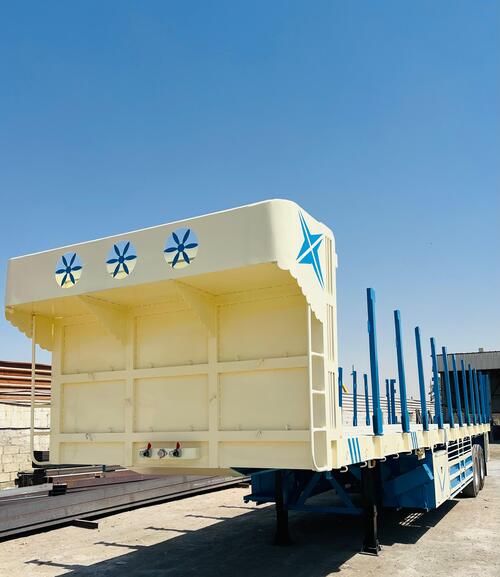If you’re considering trailer export from the UAE, you’re already in a strong position. The UAE’s world-class ports, business-friendly free zones, and experienced manufacturers make it easier to ship flatbed, lowbed, box, and curtain side trailers to GCC, Africa, and South Asia. In this friendly guide, we’ll cover the essentials—regulations, costs, documentation, and quality checks—so your export goes off without a hitch.
Why Export Trailers from the UAE?
The UAE combines reliable manufacturing quality with excellent logistics. Proximity to Jebel Ali Port and Sharjah’s free zones shortens lead times and reduces inland haulage. For a look at export-ready builds and services, see our internal resource: Exporting Trailers from Dubai – Regulations, Costs & Best Practices. If you’re still weighing body types, compare options here: Box Trailers vs. Flatbed Trailers.
Core Documents & Compliance Trailer UAE for export
Before shipping, make sure your paperwork is complete and specs match the destination country’s rules. You’ll typically need:
- Commercial Invoice & Packing List
- Certificate of Origin
- Bill of Lading (or RO-RO docs)
- Inspection/Conformity Certificates (where required)
For procedural details and latest requirements, consult Dubai Customs. For port access, terminal handling, and booking info, check DP World – Jebel Ali Port.

Cost Factors to Budget For Trailer UAE from export
The total cost of trailer export from the UAE varies by configuration and route:
- Manufacturing & Customization: steel grade, axle count, suspension (air/mech), deck materials, corrosion protection.
- Freight & Port Charges: RO-RO vs. containerized solutions, terminal handling, VGM, storage.
- Insurance & Documentation: marine insurance, legalization, and chamber attestations.
- Destination Charges: import duties, VAT, local port handling, and road registration costs.
Pro tip: Request itemized quotes from both the manufacturer and forwarder to avoid surprise fees.
Build & Quality Checklist
To minimize post-delivery issues, align specs with the end-use:
- Chassis & Coatings: high-tensile steel, hot-dip galvanizing, or epoxy systems for coastal climates.
- Axles & Brakes: rated for payload and terrain; confirm parts availability.
- Securement Points: lashing rings, stake pockets, twist locks for containers.
- Lighting & Markings: ensure compliance with UAE and destination standards.
Explore tailored specs and after-sales parts support here: After-Sales Service (Sharjah).
Logistics & Free Zone Advantages
Shipping from a free zone can simplify customs and reduce costs via duty-suspended storage and faster clearances. If you plan frequent exports, consider setting up in a zone near your preferred port to cut inland moves and speed gate-in.
Best Practices for a Smooth Export
- Confirm destination standards early (dimensions, brakes, lighting).
- Lock in Incoterms (FOB, CIF, DAP) to clarify cost and risk.
- Book RO-RO or breakbulk space in advance during peak seasons.
Conclusion
In conclusion, trailer export from the UAE offers unmatched advantages thanks to world-class ports, reliable manufacturing, and cost-efficient logistics. With the right documentation and quality checks, businesses can ensure smooth exports to GCC, Africa, and beyond. Whether you’re shipping flatbed, box, or curtain side trailers, the UAE remains one of the best global hubs for efficient and reliable exports.

